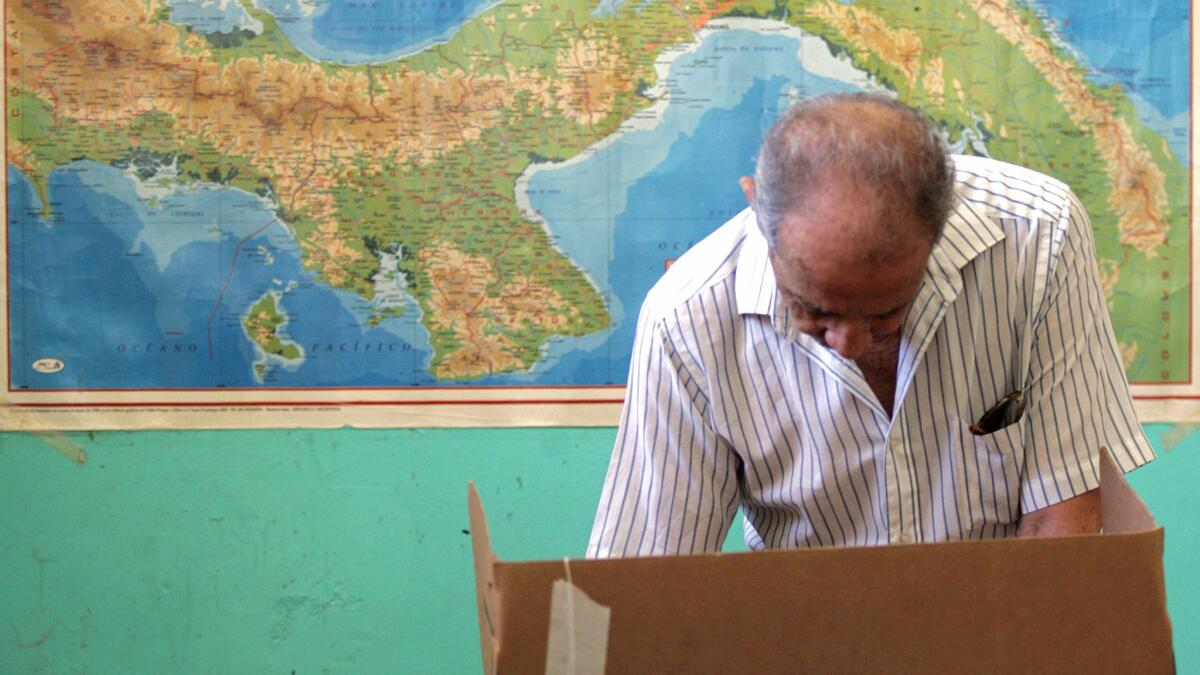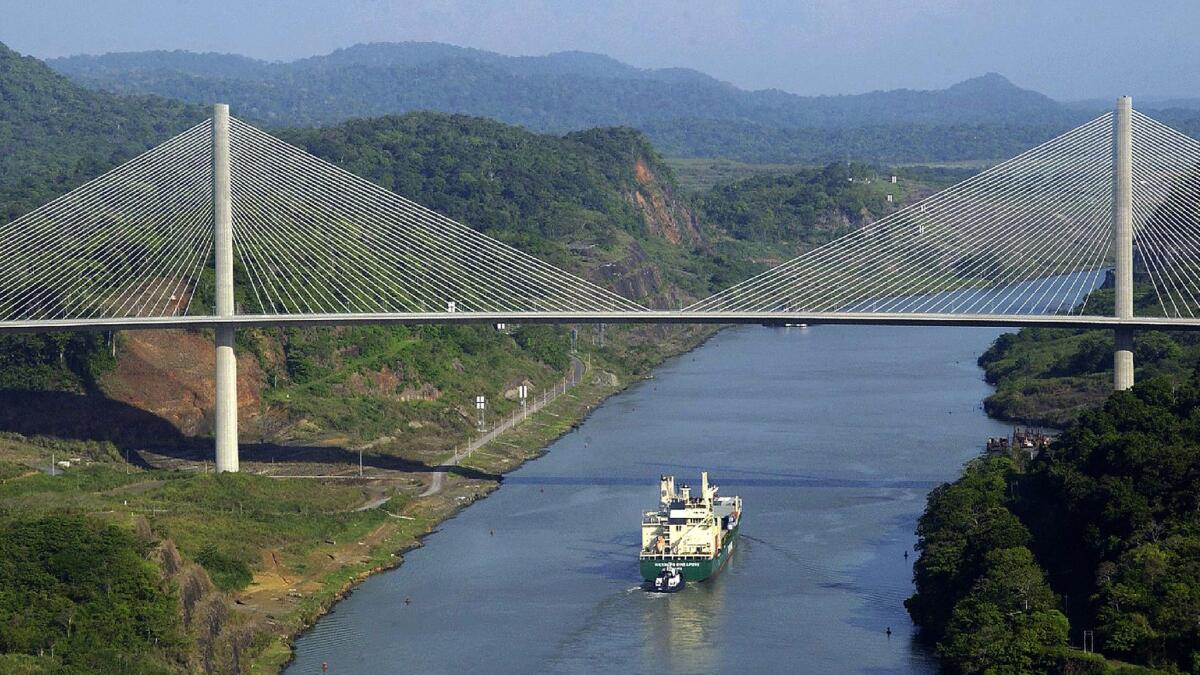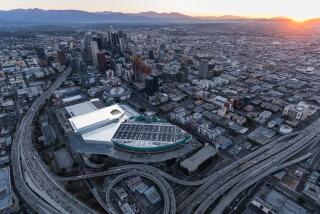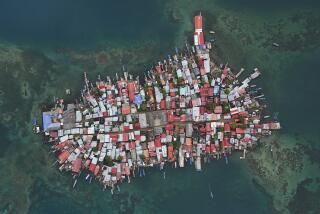From the Archives: Panama Canal plan wins easy passage

Reporting from Panama City â Panamanian voters on Sunday overwhelmingly approved a $5.2-billion proposal to expand the countryâs national treasure, the Panama Canal.
With 94% of the votes counted, ballots in favor of the project led those that were opposed, 78% to 22%, prompting Panamaâs electoral tribunal to declare the yes vote victorious. That gave the green light to the first major modification to the storied 50-mile waterway since it opened in 1914.
President Martin Torrijos staked his considerable popularity on voters approving the proposal, which he described in a recent interview as the âchance of a lifetimeâ for Panama. In a telephone response to the tribuneâs declaration Sunday evening that was broadcast over Panamanian television, Torrijos declared the vote a victory for Panamanian democracy.
Little construction is planned over the next several months, as the Panama Canal Authority, the quasi-independent administrative body, prepares an environmental impact report and final construction blueprints. But the project ultimately is expected to take eight years and create 7,000 jobs, with employment for thousands more people tied indirectly to the proposal.

By late next year, excavation will begin on the projectâs single largest component: a five-mile bypass of the southernmost locks of the canal to permit the passage of container ships capable of carrying 8,000 shipboard containers, or twice the cargo that fits through the existing waterway. On the Caribbean side, the new shipping lane will occupy a partially completed trench excavated from 1939 to 1942.
Later, two sets of parallel locks 50% wider and longer than the existing sets will be built.
âPanamanians have taken a courageous vote, and the canal authority will use all its resources to meet their expectations,â Ricaurte Vasquez, the canal authorityâs board chairman, said in an interview Sunday.
Torrijosâ government has promised voters that the expanded canal and the added ship traffic would make Panama the âSingapore of South America.â
High-rise hopes
Panamanian and international investors expect the project to spark economic growth here. The vote is expected to touch off several private and public construction projects that have been on hold until the balloting.
Dozens of high-rise office and residential towers are planned for the capital, including three structures over 80 stories tall. The canalâs sixth container port, west of the Pacific entrance, is also expected to go forward at an estimated cost of $600 million.
I voted for globalization, for progress.
— Rosa Garcia, retired government worker at Amador High School in Chorrillo
The government is expected to ask Panamaâs Congress to approve hundreds of millions of dollars to build a new sewage system to clean up the highly polluted Panama Bay, which fronts the capital. The money also would fund a modern four-lane highway to connect Panama City, on the Pacific, with the city of Colon on the Caribbean side.
Fill dirt from the bypass excavation would be used to build a new highway called the Coastal Strip, across Panama Bay.
Reservations remain
But some analysts worry that expectations about the positive impact of the project are unrealistically high, with too many Panamanians viewing the canal expansion as a cure-all for a country where about 40% of the population is living below the poverty line.
The government faces daunting social problems, including unemployment, substandard education and a troubled healthcare system.
âThe expansion will raise the stakes for Panamaâs democracy, because in a few years when the project is finished it will be unacceptable to say that the Panamanian state does not have the resources to improve the conditions of the people,â said Jorge Giannareas, professor of constitutional law and consultant to UNICEF in Panama.
Interviews on Sunday morning with a dozen voters at polling places around Panama City -- from upscale private schools to the poor Chorrillo neighborhood, where boxing legend Roberto Duran grew up -- reflected strong support and optimism for the measure.
âI voted âyesâ for my grandchild. She will be one to fill the professional jobs that the expansion creates, not me,â said retired government worker Rosa Garcia at Amador high school in Chorrillo. âI voted for globalization, for progress.â
As golf caddy Juan Renteria voted in the blue-collar Caledonia section of the capital, he said: âThis will help the poor of Panama, the peasants who come to the city and find no work. Panama has to do something for them.â
Although he thinks the canal should be expanded, accountant Samuel Godoy said he voted no because he had little confidence in the governmentâs ability to manage the project honestly and efficiently.
âThe leaders are just loading the nation with debt,â he said. âAll this propaganda of creating more jobs I donât believe.â
Despite the number of construction projects being discussed, canal authority officials say they can fill the new jobs with Panamanians rather than importing foreign tradesmen. A new network of technical schools will begin training welders, electricians, plumbers and workers in other trades, said Francisco Miguez, coordinator of the expansion master plan.
More to Read
Sign up for Essential California
The most important California stories and recommendations in your inbox every morning.
You may occasionally receive promotional content from the Los Angeles Times.










